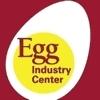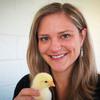Explore all the information on
Poultry welfare
Proper animal welfare involves providing the proper housing, management, nutrition, disease prevention and treatment, responsible care, humane handling and, when necessary, humane euthanasia. These factors allow for the most optimal and humane growing environment. The concept of animal welfare includes three elements: the bird’s normal biological functioning, its emotional state and its ability to express its natural behaviors. Improving animal welfare can be accomplished through offerings like poultry feed enrichment, which can reduce stress, thereby increasing performance, productivity and profitability. Animal welfare is currently a major requirement for intensive poultry production. Beak trimming, stocking density, free access to feed, heat stress, and air pollutants became important issues, which are regulated in several countries. Animal welfare is observed by watching how birds naturally behave and even by looking at mortality stemming from aggressive behaviors.
I. Introduction In Australia, 95% of the population are concerned about animal welfare with 91% desiring better ways to monitor and improve animal welfare (National pest & disease outbreaks, 2018). There is increased understanding and focus on animals’ sentience and the need to ensure farm animals have ‘lives worth living’. This applies to the Australian egg industry where research shows the community believes that hens are entitled to positive and rewarding...
Comments : 0
Recommendations: 0
Press release - After the successful product launch in France in January, site expansion of a satisfied customer, and more than 23 million eggs scanned; a new installation with three modules of the Genus Focus in-ovo sexing is installed at LOHMANN Deutschland Hatchery,...
Comments : 0
Recommendations: 0
A fast-growing broiler produces a surprising amount of heat, roughly 10 - 15 Btu/hr per pound of body weight. To put this in perspective, a single match produces one Btu/hr of heat which means that a four-pound broiler has essentially 40 to 60 matches of heat being produced within it. An eight-pound broiler would have 80 to 120 matches of heat within it, heat it must continually rid itself of in order to maintain a normal body temperature. As a bird’s body temperature increases,...
Comments : 0
Recommendations: 1
Managing by the “average” of anything can be a potentially dangerous concept when it comes to growing birds. For instance, when tunnel ventilating market-age broilers the average house temperature could be 80°F, which isn’t necessarily a problem, but it hides the fact that it could be 70°F at the pad end and 90°F at the fan end of the house which definitely would be dangerous. During cold weather, an average daily relative humidity of 60% seems ideal, but in...
Comments : 0
Recommendations: 1
When it comes to predicting the likelihood that birds will experience heat stress conditions on a given day, knowing outside relative humidity first thing in the morning is not particularly useful. Though air moisture levels have significant impact on bird comfort, relative humidity is constantly changing over the course of a day. In the morning relative humidity will tend to be between 80 and 100%. In the afternoon, as temperatures rise and the moistureholding ability of air increases, the...
Comments : 0
Recommendations: 1
In cage-free housing, multi-tiered aviary structures are often used (pictured above), where key resources (i.e., feed, water, nests, perches) are available on elevated platforms called tiers, and litter substrate is available on the ground floor for dustbathing and foraging. Hens move vertically and horizontally...
Comments : 0
Recommendations: 0
Bio-security is the cheapest, most effective means of disease prevention and control available. Proper bio-security will help to ensure the overall health and welfare of your flock. ...
Comments : 0
Recommendations: 0
Unlike many aspects of operating a tunnel-ventilated house during hot weather, the performance of an evaporative cooling pad system is relatively predictable. This is because there are well defined relationships between the cooling produced by a pad system and water usage, pad area, outside temperature/humidity, and water temperature. Since most evaporative cooling pads are essentially identical and the summertime conditions are fairly similar across most poultry growing areas of the U.S.,...
Comments : 0
Recommendations: 1
There are essentially two types of poultry house circulation fan systems: vertical and horizontal. In a vertical circulation fan system, fans are located in the center of the house, typically near the ceiling, and are oriented to blow straight down towards the floor. The air then moves across the floor, up the side walls, and back...
Comments : 0
Recommendations: 1
Preventing injury to a chicken’s foot pads (paws) is very important for a number of reasons. First, chicken paws are a valuable product, a delicacy in some cultures, and often sell for as much as two to three times as breast meat on a per-pound basis. Secondly, foot pad lesions can become infected, resulting in leg problems and a decrease in overall bird performance. Last but not least, a chicken’s feet are a good indicator of litter quality. Numerous studies have documented the...
Comments : 0
Recommendations: 1
Annelies Kers (Utrecht University) Knowledge of factors that influence the functioning of gut microbes is essential to improve health and reduce the use of antibiotics in poultry production. The environment, and more specifically housing conditions, can affect the gut microbiome of broiler chickens. The gut microbiome is defined as the collection of all the microorganisms and their “theatre of activity” in the gut environment. Previous...
Comments : 0
Recommendations: 0
Alex Alonso Wang (Big Herdsman) shows their poultry and swine equipment, explaining the features and benefits of the layer cage and the sow pen, during the Avicola Porcinos Expo 2023 in Buenos Aires, Argentina....
Comments : 0
Recommendations: 0
Christos Gougoulias (Innovad) Modern poultry broiler production strives for the maximum live weight, which can contribute to chronic intestinal inflammation and broader metabolic syndromes. There is thus a need to establish realistic models that help the industry. Several challenge models have been proposed by the scientific community and these include biological agents or pathogens, chemicals, reused litter, and, more recently, different non-starch...
Comments : 0
Recommendations: 1
Ryan Arsenault (University of Delaware) Significant research and development has been committed to finding alternatives to antibiotics that are at least as effective as conventional antibiotics in preventing disease and promoting growth. It has been well known for 70 years that antibiotics have this dual disease/growth effect. However, it was only around the turn of the century that consideration of antibiotic host effects on growth and immunity were...
Comments : 0
Recommendations: 0
.jpg&w=3840&q=75)

Afla V ONE 5 - 300 ppb Method for Total Aflatoxin Detection in Complete Feeds and Pet Food
Suggested link
Christos Gougoulias (Innovad) talks about chronic intestinal inflammation models under real farming conditions, during the 11th Symposium on Gut Health in Production of Food Animals in St. Louis, USA....
Comments : 0
Recommendations: 0
Annelies Kers (Utrecht University) speaks on the relation between the gut microbiome of chickens and their environment, during the 11th Symposium on Gut Health in Production of Food Animals in St. Louis, USA....
Comments : 0
Recommendations: 0
Ryan Arsenault (University of Delaware) talks about immunometabolism and takes a look at feed additives such as postbiotics and butyrate, during the 11th Symposium on Gut Health in Production of Food Animals in St. Louis, USA....
Comments : 0
Recommendations: 1
‘Smothering’ in poultry occurs when birds mass together, often on top of each other, resulting in death from suffocation (Bright and Johnson, 2011). The small number of reports documenting the incidence of smothering indicate that it accounts for a substantial proportion of overall mortality in free range layer flocks (Barrett et al., 2014; Bright and Johnson, 2011). In 2019 Australian Eggs Limited funded the Animal Welfare Science Centre and the Veterinary Epidemiology...
Comments : 0
Recommendations: 0
I. Introduction It is expected that the global demand for livestock products will increase by 70% by the year 2050 (Gerland et al., 2014). As one of the most high-protein and environmentally friendly sources, egg production is an important human food source. Intensive egg production enables the production of cheap, nutritious and readily available human food; however, one of the challenges is to ensure the production systems also can meet the birds' needs, including comfort,...
Comments : 0
Recommendations: 0
The common bed bug (Latin name Cimex lectularius) is part of a group of blood-feeding parasites called Cimicids. The common bed bug was mostly eradicated in North America in the 1960s. Then, in the 1990s, large cities such as New York, Chicago, Cincinnati, Toronto, Montreal and Winnipeg saw a rise in bed bug infestations that spread throughout the U.S....
Comments : 1
Recommendations: 1







.jpg&w=3840&q=75)




.jpg&w=3840&q=75)



.jpg&w=3840&q=75)


.jpg&w=3840&q=75)











